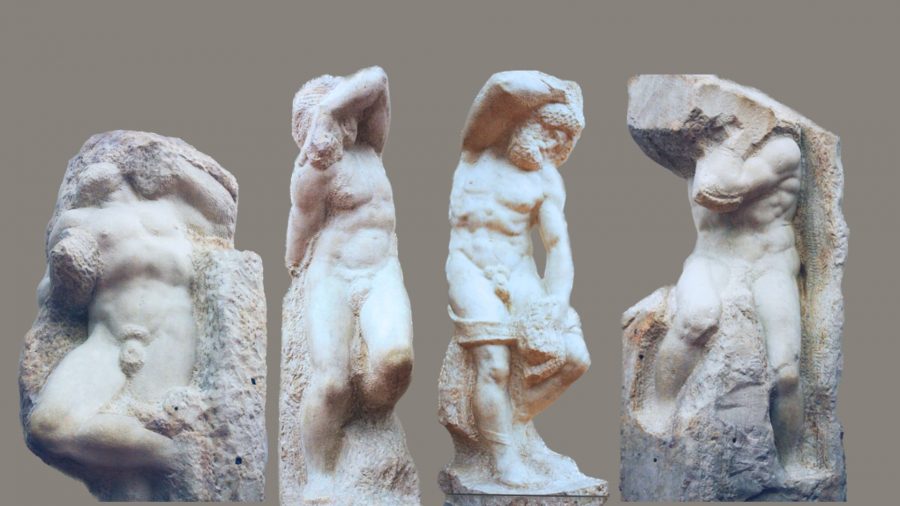Welcome back to “My Thesis in 5 Photos”— a series in which fourth year graduating students share images that illustrate their thesis process—the good, the bad, and especially, the ugly. Here, co-editor of the blog Vala who studies Art and Aesthetics, shares moments from her thesis on Michelangelo’s unfinished sculptures the Prisoners.
1. Haunted by Heidegger
These are the Cows outside of Heidegger’s Hut. I visited the hut while traveling through the Black Forest last summer—it was sort of along the way so I thought, why not. I think I understand the cows more than Heidegger, but he’s anyway wiggled his way into my analysis of the ontological status of Michelangelo’s unfinished statues. On my visit, I walked into his hut thinking it was open to the public and ruined the shot of a documentary being made. A few weeks later I noticed my Collected Works of Heidegger was inexplicably drenched. I hadn’t touched the book in a while and no other books next to it were at all wet. In the process of drying, I got back into reading it. Except for the bouts of extreme head-scratching, the haunting has been overall harmless.
2. Thesis Patisserie
This is a photo of me the night before a big thesis deadline. I’m a deep believer in procrastination as an essential part of the process of creation… and as a result of this belief my French Patisserie skills have vastly improved while writing on Michelangelo. Sometimes the creative and intellectual energy from reading Vasari synthesizes into a cogent sentence towards a thesis, and sometimes it synthesizes into a small bakery’s worth of confections. Here, instead of finishing my introduction, I’m making éclairs with a) pistachio honey pastry cream, a raspberry glaze, and pearls of pistachio marzipan, b) coffee butterscotch pastry cream, a chocolate glaze, and hazelnut brittle, c) lemon pastry cream and an earl gray caramel glaze. If you’ve ever eaten a pastry from me, you can thank Michelangelo.
3. They said it couldn’t be done
Wandering through a local used book store in Cleveland, I found a surprising number of old scholarly books on Michelangelo. This book, by Franco Russoli from 1963, had the electric title “All the Sculptures and Paintings of Michelangelo.” I flipped to the section on the four sculptures on which I’m focusing my thesis to find the sentence “it seems hardly possible to hazard a comment on these four monumental representations of despair and revolt”… and honestly, I can’t disagree.
4. Beethoven, Silk, and Candlelight
This is the pianist Mitsuku Uchida, who I’ve known from her many concerts with the Cleveland Orchestra (my hometown orchestra). It was at her performance of the final Beethoven piano sonatas that I was finally able to clearly visualize what I would do for my thesis Creative Component. I remembered, while looking at her shiny shirt, that I had a roll of silk in my art supply bin which I’m now using to create a ghostly vague replica of Michelangelo’s earliest version of the Tomb of Julius II. A few weeks later there was a storm that wiped out the power (naturally the evening before a deadline). It happened to be the anniversary of Beethoven’s death, who died during (but not because of) one of Vienna’s most violent storms. I could have relocated to a neighbor and continued working on my computer, but instead I accepted my fate, writing with pen and paper by candlelight and playing lines of Beethoven sonatas double-pointer-finger style until the lights returned.
5. Amateur Art Physicists
In my sort of wacky, half-formed metaphors for the impact that artworks can have on reality, general relativity has come up (imagine an artwork warping reality like gravity warping time and space). In trying to describe the ontological status of an unfinished work of art, particle entanglement from quantum physics has come up… Luckily my thesis advisor, Geoff Lehman, has been on board and encouraging of the experimental and messy ways I consolidate ideas into images and metaphors, and we’ve spiritedly dabbled in some loosey-goosey physics.

